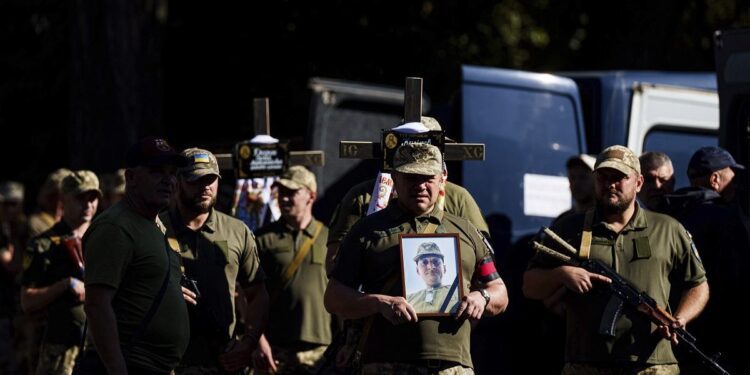In a concerning development that underscores the expanding impact of the Russia-Ukraine conflict, NATO allies Latvia and Romania have reported Russian drone incursions into their airspace. These incidents have raised alarm bells within the North Atlantic Treaty Organization (NATO) and reignited debates about the security of member states bordering conflict zones. The Russian drone incursions not only represent a violation of international law but also signal a potential escalation in regional tensions, prompting calls for increased vigilance and strengthened defensive measures among NATO members.
Russian Drone Incursions
Latvia, situated in the Baltic region, reported a significant breach when a Russian military drone crashed in the eastern part of its territory. The Latvian Defense Ministry provided details, stating that the drone had entered the country’s airspace from Belarus before crashing near Rezekne, a town of approximately 25,000 residents. This location, merely 55 kilometers west of Russia and 75 kilometers from Belarus, highlights the proximity of potential threats to NATO’s eastern flank.
Simultaneously, Romania, which shares a 650-kilometer border with Ukraine, detected a Russian drone entering its airspace during nighttime attacks on Ukrainian targets across the Danube River. This incursion prompted immediate action from the Romanian military, with F-16 fighter jets scrambled to monitor the situation. The Ministry of National Defence in Bucharest initiated a search for potential debris, emphasizing the gravity of the situation.
NATO’s Response toRussian Drone Incursions
The Russian drone incursions have elicited strong responses from NATO officials and member states. Mircea Geoana, NATO’s outgoing deputy secretary-general and former Romanian diplomat, condemned Russia’s violation of Romanian airspace, describing the acts as “irresponsible and potentially dangerous.” While acknowledging that there was no information suggesting an intentional attack against NATO allies, Geoana’s statement underscored the alliance’s concern over these provocative actions.
These incidents have broader implications for regional security and NATO’s collective defense strategy. They highlight the vulnerability of member states bordering conflict zones and the potential for unintended escalation. The frequency of such incursions, particularly in Romania’s case, where drone fragments have been found on several occasions since Russia’s full-scale invasion of Ukraine began in February 2022, points to a pattern of behavior that NATO must address.
Calls for Enhanced Security Measures
In response to these breaches, affected countries and their allies are calling for enhanced security measures. Ukraine’s Minister of Foreign Affairs, Andrii Sybiha, used these incidents to advocate for increased military aid and fewer restrictions on Ukraine’s use of weapons. His statement on social media platform X emphasized the need for “concrete action” from allies, including the possibility of using partner air defense systems to intercept Russian missiles and drones over Ukrainian territory.
Romania, recognizing the recurring nature of these violations, is considering legislative action to bolster its defensive capabilities. Lawmakers are reviewing proposed legislation that would enable Romania to shoot down drones invading its airspace during peacetime. This move reflects a growing recognition among NATO members of the need to adapt their security protocols to address emerging threats in the region.
The incidents in Latvia and Romania are not isolated events. Poland, another NATO member bordering Ukraine, has reported at least two cases of airspace violations by Russian missiles or drones targeting Ukraine, with the most recent occurrence in December. These repeated incursions across multiple NATO countries underscore the need for a coordinated and robust response from the alliance.
The recent Russian drone incursions into the airspace of NATO allies Latvia and Romania serve as a stark reminder of the complex security challenges facing the alliance in Eastern Europe. These events highlight the potential for the Russia-Ukraine conflict to have spillover effects on neighboring countries and test the resolve of NATO’s collective defense commitments. As tensions continue to simmer, it is clear that NATO must remain vigilant and adapt its strategies to counter these provocations effectively.
The response to these incursions will likely involve a multi-faceted approach, including diplomatic protests, enhanced air defense systems, and potentially new legislative measures to address the specific threat of unmanned aerial vehicles. Moreover, these incidents may catalyze discussions within NATO about expanding its capabilities to detect, track, and neutralize drone threats more effectively.
As the situation evolves, the international community will be watching closely to see how NATO balances the need for a firm response with the imperative of avoiding further escalation. The Russian drone incursions have undoubtedly raised the stakes in an already tense region, emphasizing the critical importance of unity and readiness among NATO allies in the face of emerging security challenges.
















